Travelling to South Korea soon but feeling daunted by the language barrier? Fret not! Take this as an excuse to learn some useful Korean phrases before you go, including how to say “hello” or “thank you” in Korean with the right pronunciation. While there’s a growing number of young Koreans who can speak English, learning a few Korean words, greetings, and expressions can still help you explore the country as a tourist.
Aside from the practical benefits of knowing the basics of the Korean language, you’ll find that this is a great way to enhance your travel experience. Ready to impress the locals? Whip out your notebook and start taking notes!
Also read: 15 South Korea Apps to Download for Your Travels to The Land of The Morning Calm
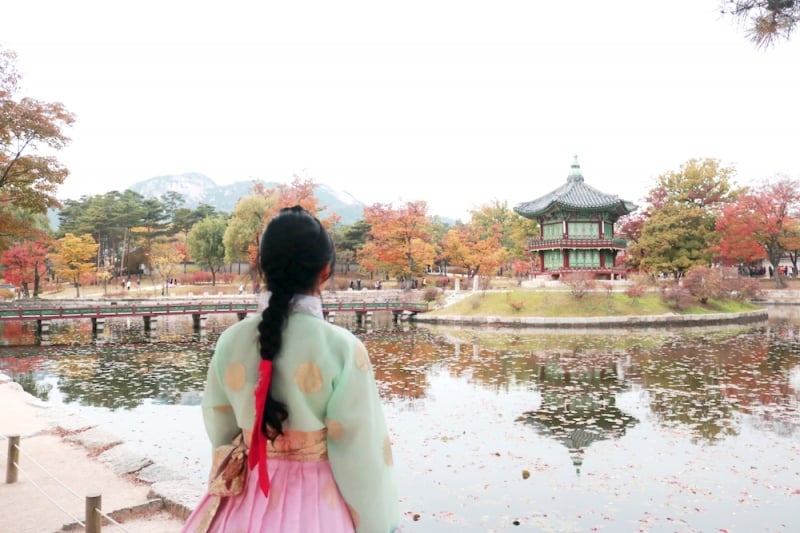
If you haven’t booked your flights, book your holiday 90 days in advance to enjoy fares from just S$688 ALL-IN. For a step-by-step booking guide and that extra push, find out why flying on Korean Air might be just the thing to complete your Korea experience!
Basic Korean greetings and expressions
1. Annyeonghaseyo (안녕하세요) – “Hello”
Let’s start with the basics of saying “hello” and “thank you” in Korean. Koreans greet each other by saying, “Annyeonghaseyo (안녕하세요).” You say this while slightly nodding your head if the person is around the same age as you.
If the person you are talking to is much older, make sure you bow down lower to show your respect. If the person you are greeting is younger, a simple “Annyeong (안녕)” will do!
Click here to listen to an audio recording of the phrase.
2. Kamsahamnida (감사합니다) – “Thank you”
The Korean language can be quite complicated because the grammar changes depending on the age of the person you are talking to. There are many ways to say “thank you” in Korean but the safest and most common phrase is “Kamsahamnida (감사합니다).” Again, slightly nodding while saying this greeting in Korean conveys your respect for the recipient.
Click here to listen to an audio recording of the phrase.
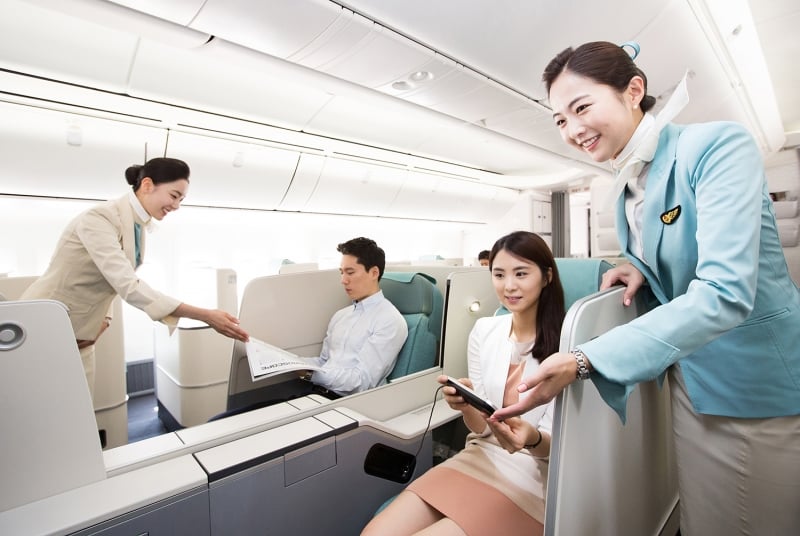
Friendly Korean Air crew ready to help you practise your Korean greetings | Image credit: Korean Air
“Annyeonghaseyo” and “kamsahamnida” are probably two of the most commonly used phrases in Korean, so make sure you master the basics before proceeding with the rest of the list.
Also, don’t be shy to practise! Utilise your newly-found Korean language skills the moment you land in South Korea or even better — when you step onboard your flight! If you’re flying to Korea on Korean Air, use these two Korean phrases on the cabin crew when they greet and serve you. Grab your flights on discount with Korean Air’s Early Bird Promotion, where return flights start from just S$688 ALL-IN for bookings made 90 days or more in advance.
3. Jwesonghamnida (죄송합니다) – “Sorry”
The last word in this section is not really a greeting but an important word nonetheless: “Jwesonghamnida (죄송합니다),” which is the formal way to say “sorry” in Korean.
Click here to listen to an audio recording of the phrase.
Useful Korean phrases to help you find your way
4. Yeongo halsu isseoyo? (영어 할수있어요?) – “Can you speak English?”
Have you ever been in a situation where you know that the place you’re heading to is nearby, but you can’t seem to spot it? The easiest way to solve your problem is to ask a local!
When you approach them, say “Yeongo halsu isseoyo? (영어 할수있어요?)“ to check if the person can speak English. If you’re in luck, he or she may say yes and you can easily ask for directions in English!
Click here to listen to an audio recording of the phrase.
5. Yeogi ga eodiyeyo? (여기가 어디예요?) – “Where is this place?”
If the local shakes his or her head, you can ask, “Yeogi ga eodiyeyo? (여기가 어디예요?),“ while showing a picture of your destination.
Click here to listen to an audio recording of the phrase.
6. …Eoddeokke ga yo? (어떻게 가요?) – “How do I get to…?”
If you know the name of the place in Korean, you can also say, “…eoddeokke ga yo? (~ 어떻게 가요?)“ For example, if you’re looking for Gyeongbokgung Palace, say, “Gyeongbokgung eoddeokke ga yo?“
Click here to listen to an audio recording of the phrase.
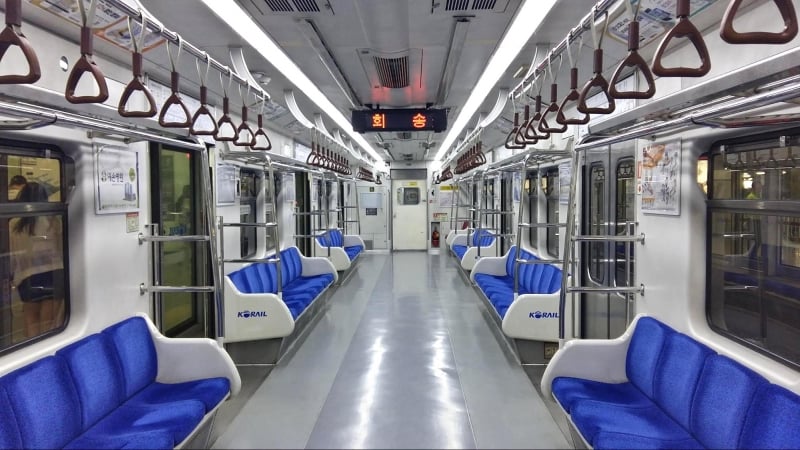
7. Hwajangsil eodiyeyo? (화장실 어디예요?) – “Where is the toilet?”
Other important directional Korean phrases that are useful to remember is how to find the toilet and the nearest subway station: “Hwajangsil eodiyeyo? (화장실 어디예요?)” and “Jihachol yok i eodiyeyo? (지하철 역이 어디예요?)” respectively.
Click here to listen to an audio recording of the phrase.
8. Jihachol yok i eodiyeyo? (지하철 역이 어디예요?) – “Where is the subway station?”
Click here to listen to an audio recording of the phrase.
Korean phrases to use in a restaurant
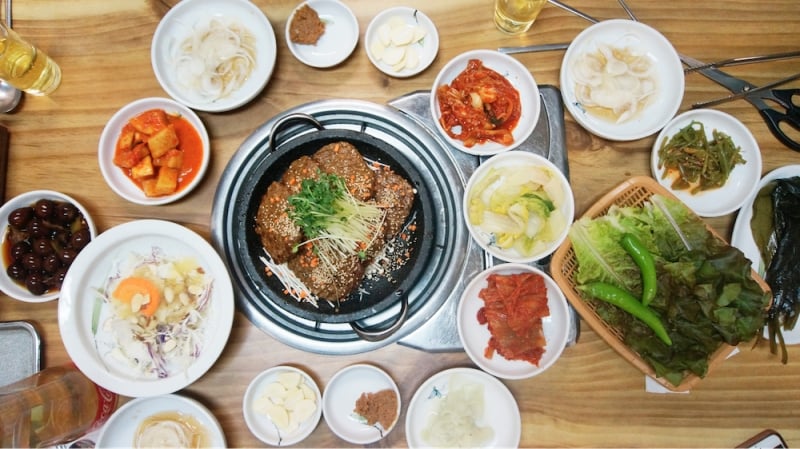
9. Jeogiyo (저기요) – “Excuse me”
Ordering food in Korean restaurants is a breeze — if you learn the next few Korean words below. The first one is “Jeogiyo (저기요)“ or “excuse me.” Use this Korean phrase to attract the attention of the servers to get the menu, order your food, or pay the bill.
Click here to listen to an audio recording of the phrase.
10. Jummun halggeyo (주문할게요) – “I would like to order”
After getting the attention of the servers, you can say “Jummun halggeyo (주문할게요)“ to convey that you want to order. The server will come to you, ready to take your order.
Click here to listen to an audio recording of the phrase.
11. Igeo hana juseyo (이거 하나 주세요) – “One of this, please”
Go ahead and point to the menu while saying “Igeo hana juseyo (이거 하나 주세요)“ or “one of this, please” to order your desired choice of food. If you prefer to order two, you can say “Igeo du ge juseyo (이거 두 게 주세요)“ instead. Here, “du ge” refers to two items.
Click here to listen to an audio recording of the phrase.
12. Gyesan halggeyo (계산할게요) – “I would like to pay”
When you are ready to pay your bills, simply say “Gyesan halggeyo (계산할게요).” You will either be pointed to the cashier or the bill will be brought to you. Easy, right?
Click here to listen to an audio recording of the phrase.
Important Korean phrases for shopping
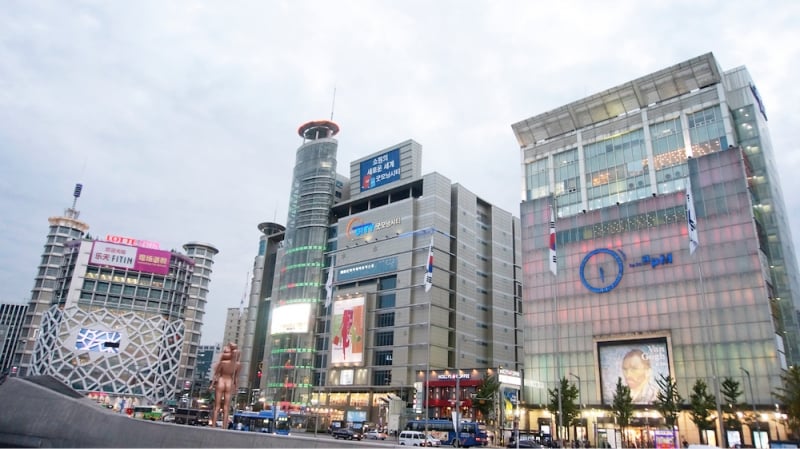
Dongdaemun, one of Seoul’s most popular shopping districts.
13. Igeo eolmaeyo? (이거 얼마예요?) – “How much is this?”
South Korea is famous for its amazing shopping areas such as Myeongdong, Dongdaemun, and Ewha Womans University. Whether you’re buying the latest K-beauty products or cute Korean clothes, you may face a situation where you can’t find the price tag. Simply ask the shopkeeper for the price by saying “Igeo eolmaeyo? (이거 얼마예요?).” It means, “How much is this?”
Click here to listen to an audio recording of the phrase.
14. Ggagga juseyo (깎아주세요) – “Discount, please”
If the shopkeeper can tell that you’re a foreigner, he or she will most likely pick up a calculator to show you the price. In most Korean stores, especially in traditional markets or areas such as Hongdae, you can ask for a discount if the item is expensive. Simply say “Ggagga juseyo (깎아주세요).” Keep in mind that if you purchase more than one item, chances are, the shopkeeper will be more than willing to give you a discount!
Click here to listen to an audio recording of the phrase.
Other useful Korean phrases to know
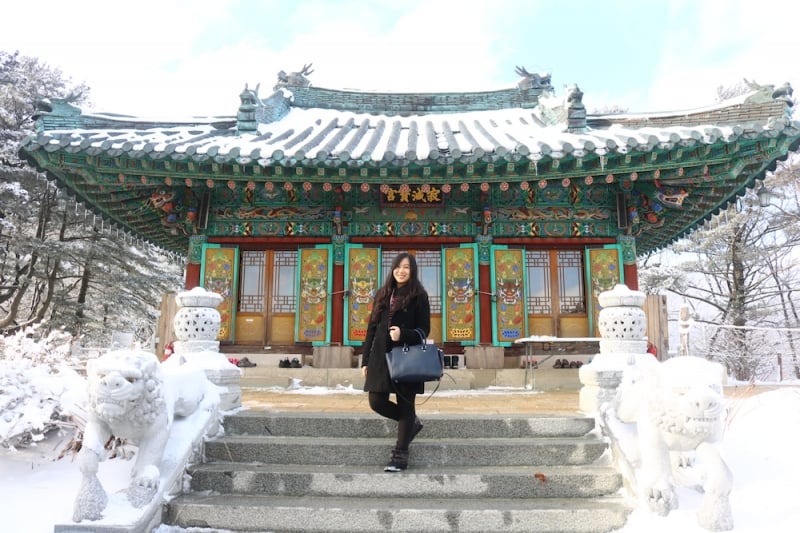
”Jeogiyo, sajin jjigeojuseyo!” (저기요, 사진 찍어주세요!)
15. Jeogiyo, sajin jjigeojuseyo (저기요, 사진 찍어주세요) – “Can you please take a photo for me?”
One of the most useful phrases that will help you in South Korea is “Jeogiyo, sajin jjigeojuseyo (저기요, 사진 찍어주세요).” You can use this Korean phrase to seek someone’s help with taking a photo for you. Don’t be shy to ask: Koreans are really friendly and will be more than willing to assist you.
Click here to listen to an audio recording of the phrase.
16. Mannaseo bangapseumnida (만나서 반갑습니다) – “It’s nice to meet you”
Want to impress some of the Korean locals you just met? After meeting someone for the first time, don’t forget to say “Mannaseo bangapseumnida (만나서 반갑습니다)” or “it’s nice to meet you” in Korean. Just like “hello” and “thank you,” this is one of the most common Korean expressions that beginners can use for everyday conversation.
“Mannaseo bangapseumnida” is the polite and formal way to say “it’s nice to meet you.” But if you’d like to use this phrase when speaking to a younger person or a friend, say “Mannaseo bangawo (“만나서 반가워)” to sound more casual.
Click here to listen to an audio recording of the phrase.
Also read: All The Best Apps and Online Courses for Korean Language Lessons
Summary
Here’s a summary of our short Korean language lesson.
| 1. | Annyeonghaseyo (안녕하세요) or Annyeong (안녕) | Hello! |
| 2. | Kamsahamnida (감사합니다) | Thank you |
| 3. | Jwesonghamnida (죄송합니다) | Sorry |
| 4. | Yeongo halsu isseoyo? (영어 할수있어요?) | Can you speak English? |
| 5. | Yeogi ga eodiyeyo? (여기가 어디예요?) | Where is this place (show the picture of your destination)? |
| 6. | …eoddeokke ga yo? (어떻게 가요?) | How do I get to…? |
| 7. | Hwajangsil eodiyeyo? (화장실 어디예요?) | Where is the toilet? |
| 8. | Jihachol Yok i eodiyeyo? (지하철 역이 어디예요?) | Where is the subway station? |
| 9. | Jeogiyo (저기요) | Excuse me |
| 10. | Jummun halggeyo (주문할게요) | I would like to order |
| 11. | Igeo hana juseyo (이거 하나 주세요) | One of this (point to something on the menu), please |
| 12. | Gyesan halggeyo (계산할게요) | I would like to pay |
| 13. | Igeo eolmaeyo? (이거 얼마예요?) | How much is this? |
| 14. | Ggagga juseyo (깎아주세요) | Discount please |
| 15. | Jeogiyo, sajin jjigeojuseyo (저기요, 사진 찍어주세요) | Can you please take a photo for me? |
| 16. | Mannaseo bangapseumnida (만나서 반갑습니다) | It’s nice to meet you |
Congratulations, you are now ready to book your tickets to the land of Kimchi!
If you’d like to begin an immersive Korean experience from the moment you take off from the tarmac, consider flying with Korean Air, the flag carrier of South Korea. Be sure to book your flights 90 days in advance to enjoy the Early Bird Promotion, with return flights from just S$688!
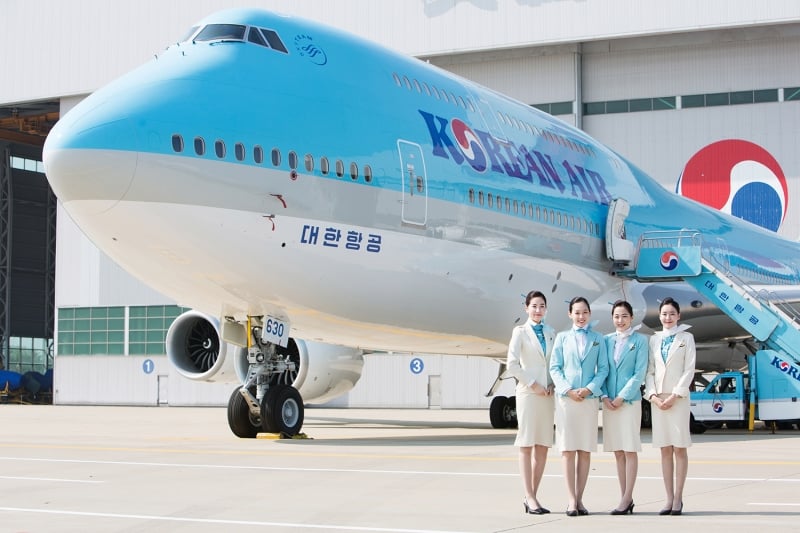
Image credit: Korean Air
Go ahead and impress locals with your newfound mastery of the Korean language! Who knows, with these useful Korean phrases and expressions at hand, you might actually be mistaken for a Korean!
Brought to you by Korean Air.




